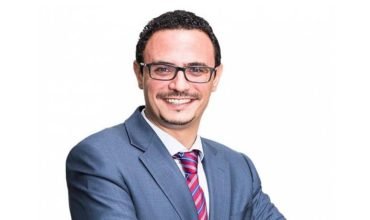Ziad Youssef, VP Secure Power – MEA, Schneider Electric, speaks to Anita Joseph about technology in automation and energy management, Schneider Electric’s market strategy and positioning, and closing the gap between data extraction and value creation.
How would you describe the technology landscape of the Middle East at this point? Where is it headed?
The most important element in the technology landscape within the Middle East is digital transformation. Adoption of fast-moving technologies and methodologies – Cloud, Artificial Intelligence, and Internet of Things (IoT) – are demanding a new kind of technical knowledge and dexterity. Traditional IT is shifting and becoming more distributed, requiring a digital approach to IT infrastructure and operations within private sector companies as well as government entities offering digital services to the consumers. It is crucial to manage and monitor these connected devices to provide the right level of services to consumers. The enormous data generated from connected devices in the region is pushing demand for data centers and also is driving a huge demand for power and the need for efficiency.
How does Schneider help the region integrate iOT and OT to stay ahead of global technological innovations and trends?
The need for connected and digitized devices has been growing more than ever. In order to cater to the industry needs, Schneider Electric launched its EcoStruxure solutions approximately three years ago. The colossal amount of data generated and updated on premise comes with its own challenges. In order to close the loop, we look at sites modernization and services to Improve operational efficiency. IoT is a key driver in enabling digitized devices in the technology and industrial space. OT equips the digitally connected industrial operations to perform more intelligently and be more responsive. The technology supporting the convergence of IoT and OT allows to successfully implement changes across multiple organizational departments, differing geographies and ultimately impacting various stakeholder groups in improving their bottom line.
How is the MENA region adapting to technological changes such as automation and energy management? What are some of the positives that this region has?
From the time cloud-based solutions have gained prominence, there have been concerns from the governments, regulators and banks to overcome the security related aspects both on and off premises. Implementing appropriate cybersecurity solutions has helped in improving the Trust Levels in Cloud based solutions. The concept of industrial automation started planting its roots as technological developments became more and more advanced.
Over time, it became more feasible for industries to utilize tools, techniques, modules, and procedures that would enhance the level of automation implemented in a particular system and negate the requirement for human resources to be assigned for the same. This was excellent from the industrial point of view – with this automation technology becoming more economically feasible in the long run, now, a workforce can be assigned to pressing tasks that require a human touch and can’t be accomplished by the current state of industrial automation technology – at least, not yet.
There is no denying that the digital services provided across government and private sector companies through various apps and online channels have instigated a massive change in the energy space. Electricity is the key driver for the surge in need of more power. In an effort to preserve the environment and the natural resources, we need to work towards utilizing energy in a reserved and sustainable manner. The transition to an all-electric world is causing a significant transfer of CapEx spend. In 2018, Schneider Electric achieved 30% of CapEx shift to green energy and aims to maintain the positive trajectory by reaching 80% by 2020 and 100% by 2030.
What are some of your latest, cutting-edge products and solutions?
Schneider Electric has been on a journey to provide products that are connected and digitized. Our products and solutions are receptive to the need of the industry ranging from Medium voltage distribution & grid automation, Smart LV Panels & Edge Solutions.
Schneider Electric’s EcoStruxure is an open, interoperable, IoT-enabled system architecture and platform. EcoStruxure delivers enhanced value around safety, reliability, efficiency, sustainability, and connectivity for our customers. EcoStruxure leverages advancements in IoT, mobility, sensing, cloud, analytics, and cybersecurity to deliver Innovation at Every Level. This includes Connected Products, Edge Control, and Apps, Analytics & Services which are supported by Customer Lifecycle Software. EcoStruxure has been deployed in almost 500,000 sites with the support of 20,000+ developers, 650,000 service providers and partners, 3,000 utilities and connects over 2 million assets under management.
What is your market positioning and strategy, to stay ahead of competition?
Schneider Electric has been enabling digital transformation for customers with its integrated solutions. From energy and sustainability consulting to optimizing the life cycle of your operational systems, we have world-wide services to meet your business needs. As a customer-centric organization, Schneider Electric is a trusted advisor to help increase asset reliability, improve total cost of ownership and drive your enterprise’s digital transformation towards sustainability, efficiency and safety. In order to retain our leadership position in the market, we focus on empowering our partners to overcome the challenge of managing data centers and incorporating effective security solutions resulting in improved infrastructure efficiency that take their business goals forward.
How is technology redefining the automation and energy management landscape of the region?
There is a great potential for automation technology in this region leading up to mega projects such as World Expo 2020, Industrial and Building Automation as prime focus. The virtual world is continuously changing; systems are becoming faster, safer, more efficient, and independent. A collaborative approach in tackling today’s urban issues – energy, mobility, sustainability, and wellbeing – is of paramount importance to Schneider Electric. We have a standardized, automated way of managing the business by looking at current and future operations. We believe energy efficiency is a major investment point for every step in the energy process — from energy generation in power plants, to Smart Cities with connected grids for energy transmission, down to monitoring and repairing electrical infrastructure in individual buildings,
What are some of the leading trends, in this context?
The industry over the next decade will become more focused on closing the loop between data extraction and value creation. In order to achieve this, we are seeing an acceleration of the convergence between IT and OT to support the ongoing digital transformation of industry and infrastructure. The top most trending technologies that we believe will play out over the next twelve months is the growing deployment of solutions that combine cloud and edge computing.
Given the increasing convergence of information technology (IT) and operational technology (OT) and today’s emphasis on digital transformation, manufacturers must focus on deploying computing resources where it makes the most sense to do so on an application-to-application basis. A simultaneous approach that utilizes both cloud and edge solutions has emerged to enable industrial organizations to distribute computing resources more broadly.
In industrial environments, edge technology is used to get the right device data in near real-time to drive better decisions and even control industrial processes. With its ability to reduce latency and increase availability, Edge computing presents a promising way forward, especially across three key industries that are fast emerging through digital transformation: commercial (retail, healthcare, finance, and education), industrial (oil & gas, mining, automotive, and manufacturing) and telco (cell towers and base stations). Once processed and analyzed, the data is sent to the cloud, which allows the organization’s IT group to leverage this often-critical business information. The simultaneous edge/cloud approach entails deploying edge devices with embedded analytics, edge servers, gateways, and cloud infrastructure to deliver industrial-grade availability and performance.
By combining both edge and cloud technologies, industrial and infrastructure organizations can provide appropriate personnel with actionable information to support real-time business decisions, leveraging asset monitoring, analytics, machine learning (ML), and artificial intelligence (AI) to make sense of and act on complex data patterns. This will help organizations better identify process and other operational inefficiencies and pinpoint potential safety, production, or environmental issues.




